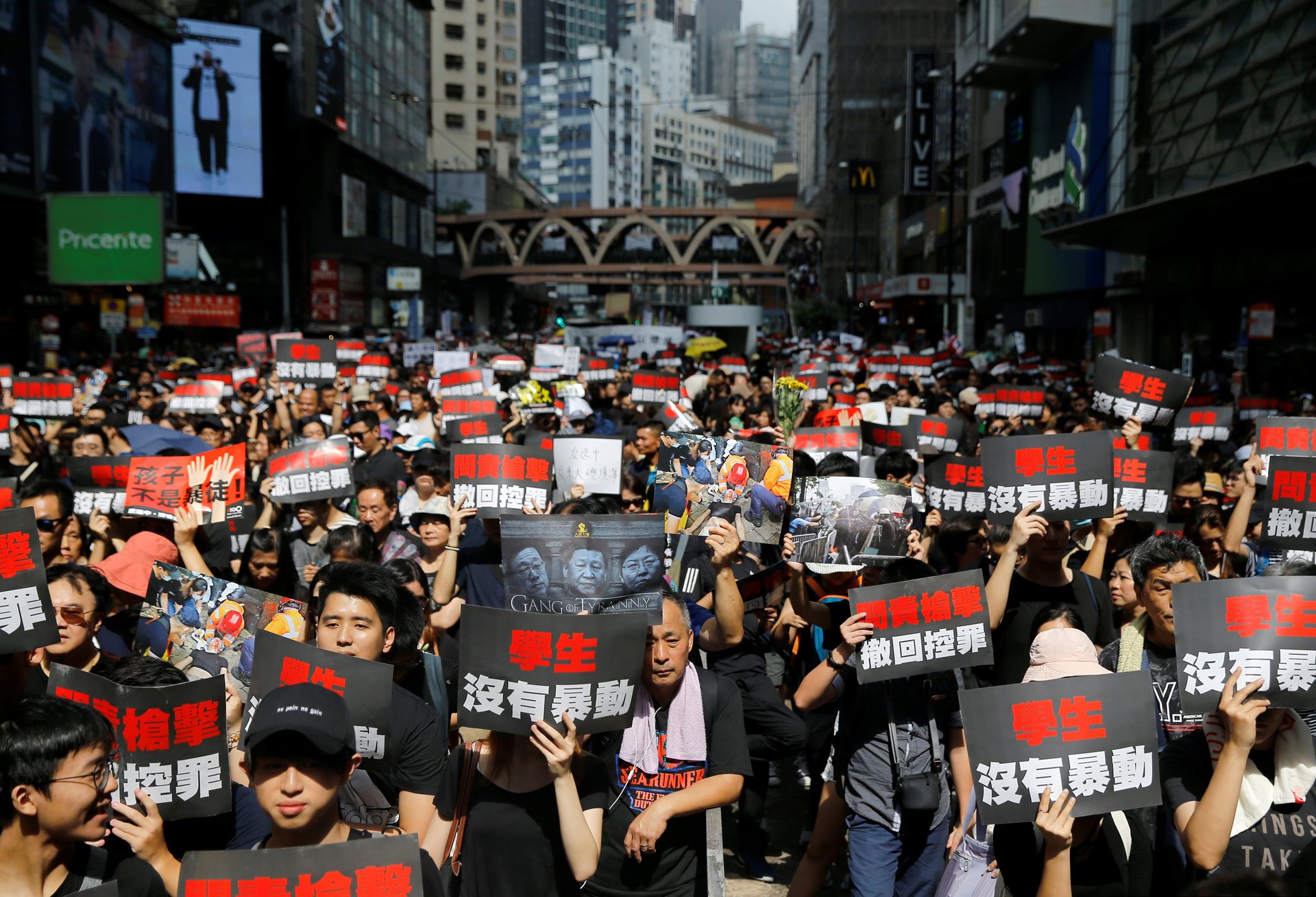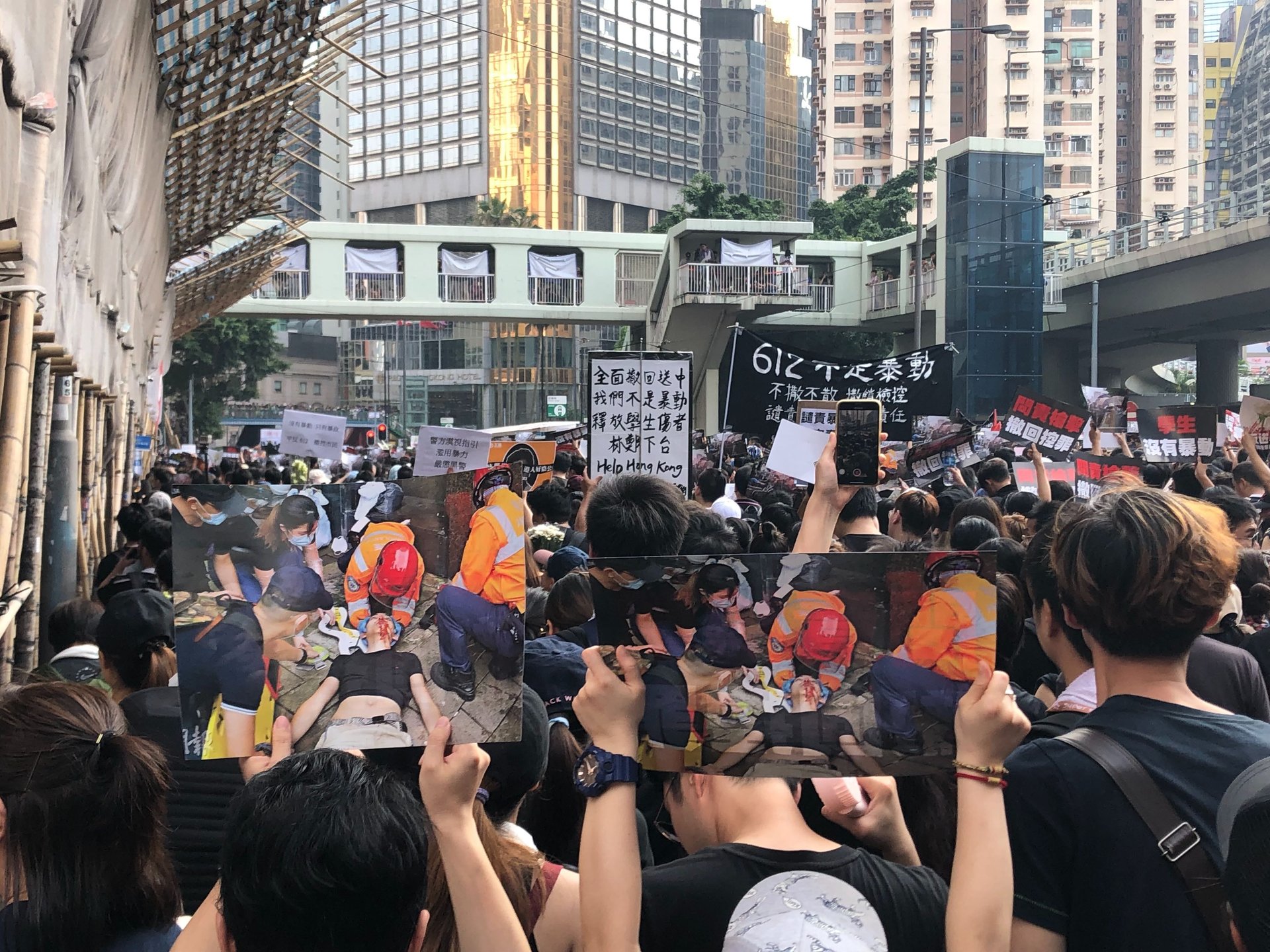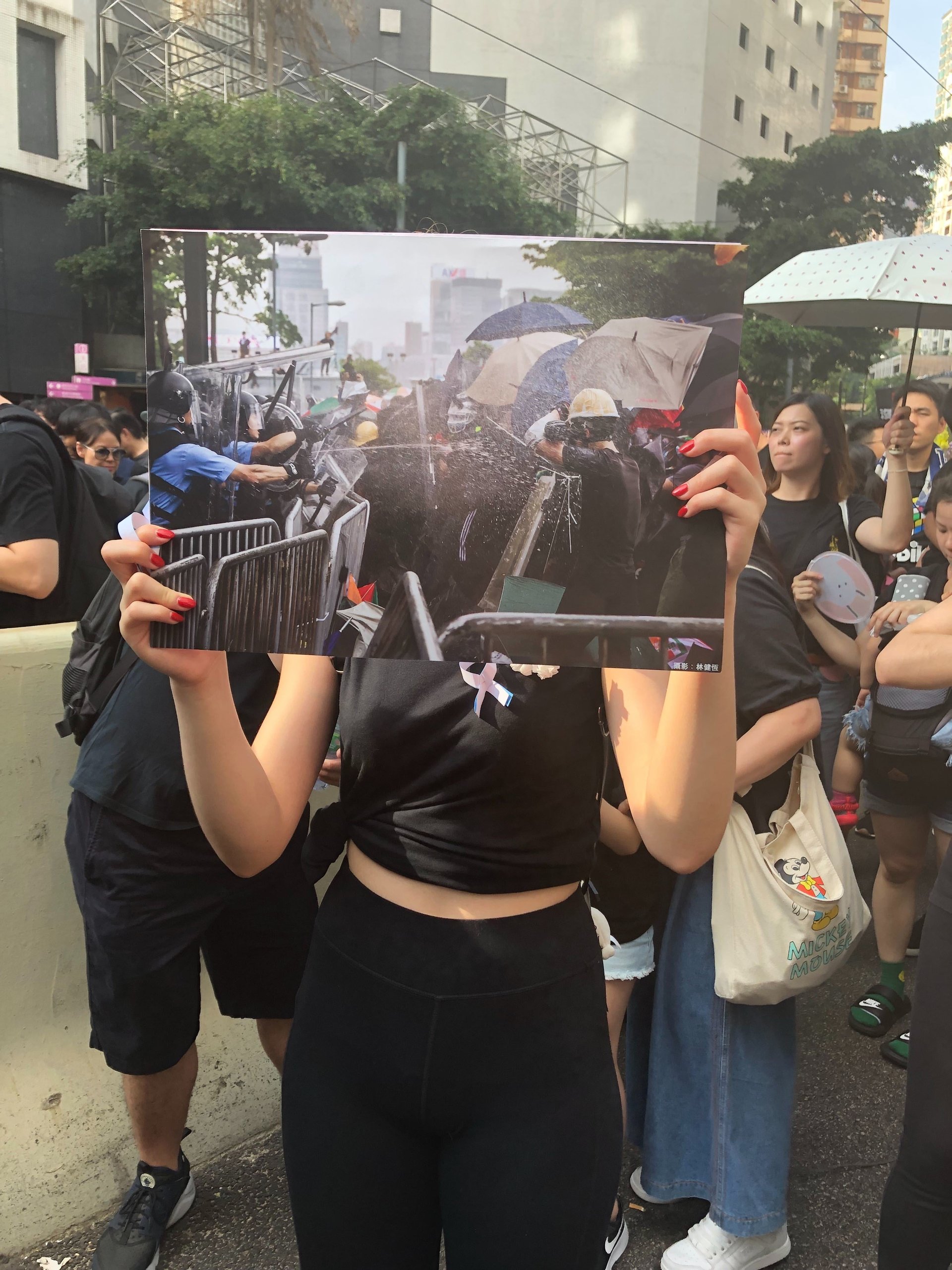The problem with calling Hong Kong’s protests a riot goes back to a colonial-era law
Hundreds of thousands of people are again out in the streets in Hong Kong today (June 16), even after the city’s chief executive announced yesterday she would indefinitely suspend a controversial extradition bill that has seen a storm of protest in the city for the past week.


Hundreds of thousands of people are again out in the streets in Hong Kong today (June 16), even after the city’s chief executive announced yesterday she would indefinitely suspend a controversial extradition bill that has seen a storm of protest in the city for the past week.
Along with calling for the complete withdrawal of the legislation, which would have allowed the city to extradite criminal suspects to mainland China to face charges, they want the government to retract its designation of a protest this past week as a riot.
On Wednesday (June 12), as lawmakers prepared to move forward with the hated bill, seen by many as an existential threat to the freedoms the city has enjoyed since passing from British rule to Chinese sovereignty, thousands occupied major roads asking for it to be scrapped. Some among the largely peaceful protesters clashed with riot police, who used tear gas and rubber bullets to disperse the crowd in a display that many here saw as an excessive use of force. The same day, the police declared the demonstration a riot. Wednesday’s protest action came after the opposition voiced by a million people at a peaceful march last Sunday appeared to make little difference.
The city’s top official, Carrie Lam, on Saturday declined to walk back the “riot” label, and said police were defending themselves in the face of violence from protesters. By Sunday she was more conciliatory, issuing an apology (paywall) for the way the government had handled the protests.
Labeling the action a riot means those who participated in Wednesday’s action could face up to 10 years in prison if prosecuted for their participation—longer than the maximum terms pro-democracy figures from the 2014 Umbrella Movement protest faced for their prosecutions for public nuisance charges earlier this year under different colonial-era rules. Of the 11 people arrested in relation to Wednesday’s protests, four people have been charged with rioting. And police have said they will examine video footage for more evidence of crimes.
The use of the “riot” designation is laid out in the colonial-era Public Order Ordinance, which is prone to being misused against protesters as several of its provisions are vaguely defined, say civil society and legal advocacy groups. The ordinance was enacted in 1967 following violent riots that year against British colonial rule, and penalizes a number of offences related to unlawful assembly, with rioting and damage caused while rioting meriting the most severe punishments. The last time a protest in Hong Kong was designated a riot was 2016, during the so-called Fishball Revolution in the city’s Mong Kok district. Prior to that, a 2005 protest against the World Trade Organization was labeled a riot.
Under current law, any unlawful assembly can be deemed a riot if anyone taking part in it commits a “breach of the peace.” The Progressive Lawyers Group, which advocates for the rule of law and democracy in Hong Kong, has noted that this “is a very low threshold which is not commensurate with the heavy penalty it imposes.” Similarly, the Hong Kong Universal Periodic Review Coalition, an alliance of local civil society groups that delivers human rights status reports to the UN, has pointed out that prosecutors have wide discretion to define an act as a riot.
Former Hong Kong governor Chris Patten has also criticized the colonial-era law, calling it “vague,” “open to abuse,” and in violation of international human rights standards.
Police have said protesters attracted the designation for using “very dangerous weapons” including barricades, sharpened metal poles, and bricks. Lam said some of the protesters threw bricks. But protesters say it was police who were out of order, using excessive force.
A small portion of frontline protesters undeniably charged at police officers outside the Legislative Council building, as video footage from local broadcaster Now TV can attest. Journalists closest to the confrontations said they saw protesters toss water bottles and umbrellas toward police. But the vast majority of protesters were unarmed and peaceful, using umbrellas and goggles to shield themselves from the 150 canisters of tear gas fired at them by the police.
At a protest by women on Friday evening, many carried signs saying “don’t shoot our kids,” and at today’s march, anger over police behavior and the rioting designation drove massive turnout. Some observing the march predict it will equal or surpass last Sunday’s, which itself set a record.
Many protesters held up photos of a man who was injured by the police at Wednesday’s protest.


Selena Wong, 20, carried a photograph showing a scene from during the week of police spraying water at protesters over barricades. Her boyfriend, Sunny Wong, said he was on the streets today to protest police brutality against protesters and journalists and the “total disrespect” shown by the government to the people.
This story was updated with details of Hong Kong’s chief executive Carrie Lam’s apology.